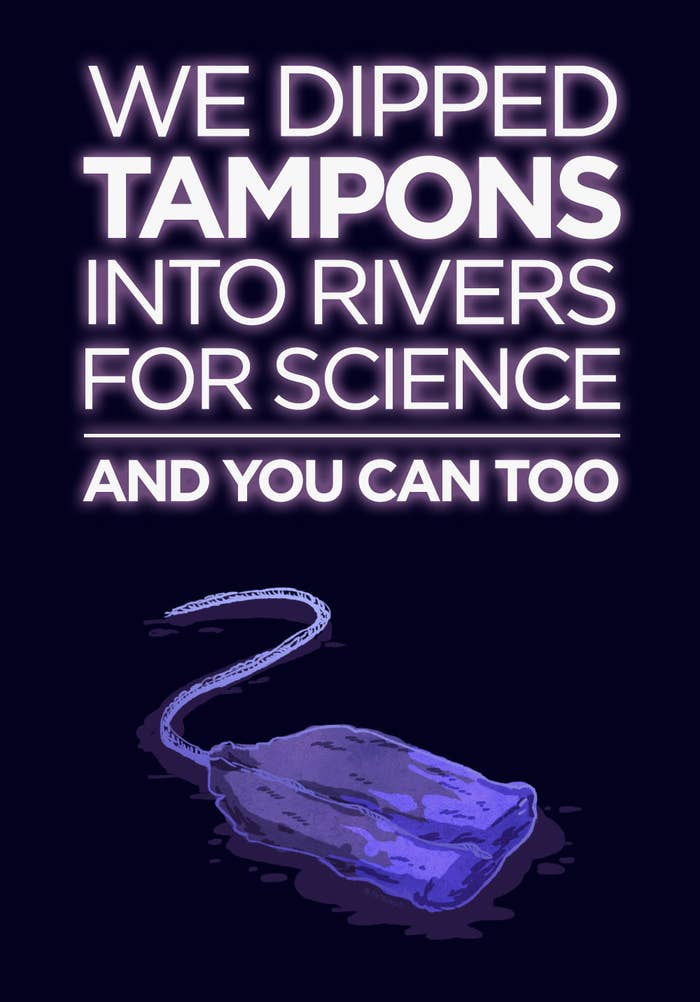
A little while ago, some scientists figured out that you could test whether a river was polluted with "grey water" by dipping tampons into it.
Grey water is the stuff that comes out of your washing machine, shower, and dishwasher when they drain. It's not the absolute worst thing to pollute a river with, but it's not great either. It can contain a whole host of nasty things – from norovirus to disease-causing fungi.
It should be sent to a sewage facility for treatment, but sometimes it can end up in storm sewers instead. These sewers are designed to collect runoff rain and empty straight into rivers.
It turns out tampons are the ideal scientific implement to test whether a river contains grey water.
Grey water tends to contain optical brighteners thanks to laundry detergent, and they glow brightly under UV light. So if you dip a tampon into a river, put it under a UV lamp, and it glows, you know there are optical brighteners in the river that shouldn't be there.
Of course, when we heard about this we had to try it out for ourselves.
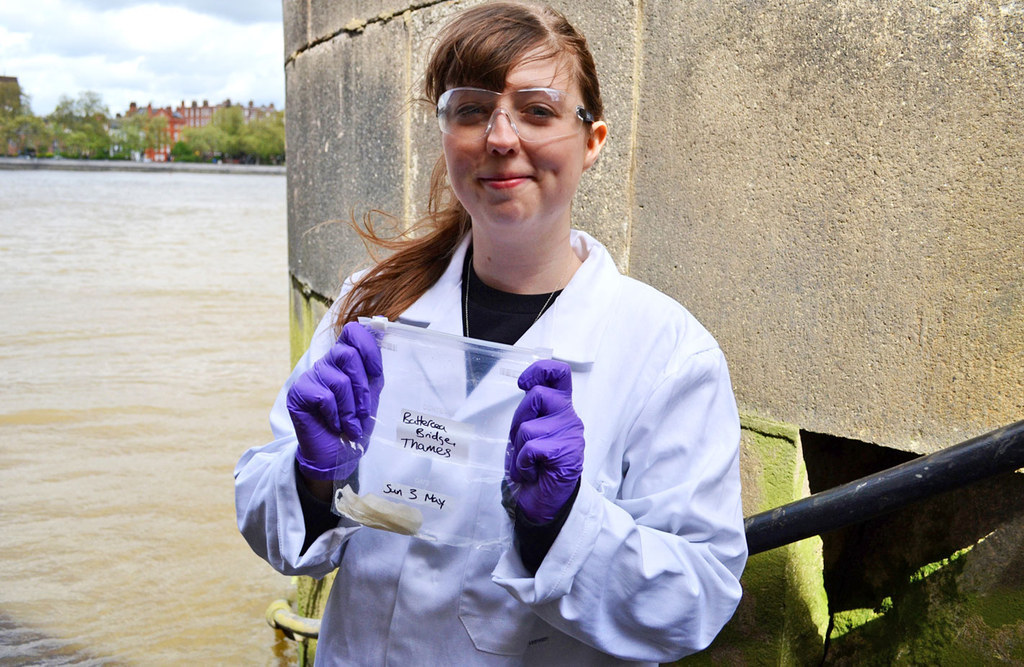
The BuzzFeed Science team is pretty international, so we joined forces and tested rivers in London, New York City, and Omaha. Before we got to work we called up the University of Sheffield's David Lerner, who did the original research, to get some tips.
Lerner told us that his team tied tampons to bamboo sticks and left them for three days before retrieving them and analysing their samples. We didn't fancy our chances of finding the tampons after three days if we did this in city center rivers, so we decided we'd dip the tampons in for just a few seconds and see what we could find.
Grey water tends to get released into rivers in bursts, so there was a chance we could miss it due to bad timing. But Lerner was optimistic. "Once you're into a river, if you've got lots of intermittent problems and you've got mixing in the river, it might well be there all the time," he said. "But if there's nothing there, it doesn't prove that the river's clean, it just proves that there's nothing there at that moment."
If you want to play along at home, here is what you'll need.
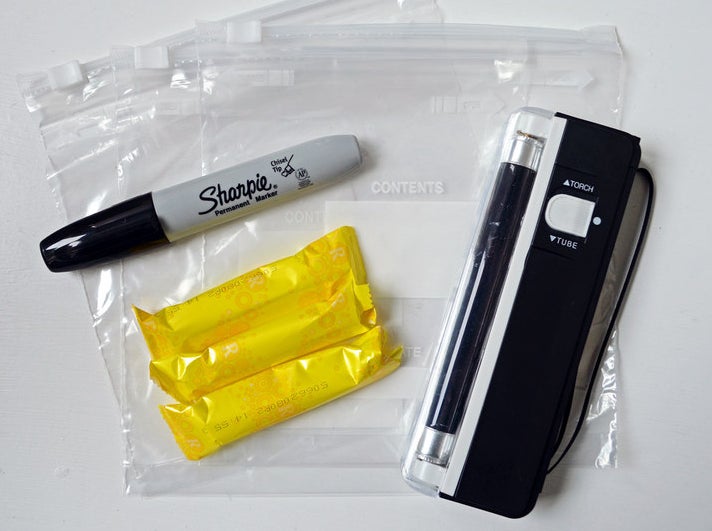

You will need:
– Tampons
– A UV lamp/black light (you can buy these pretty cheaply from Amazon)
– Ziplock bags and a marker to label them
– A selection of rivers (not pictured)
First check that your tampons don't fluoresce on their own.
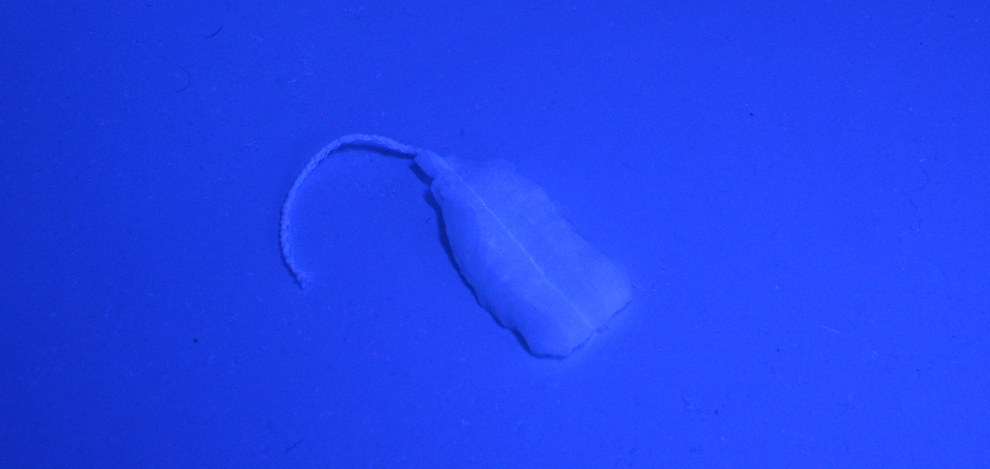
1. Dip tampons in filtered water (tap water also works fine, if you can't get filtered).
2. Look at it under a your UV light in a dark room.
Is it glowing? No? Then you're good to go!
Then head outside.
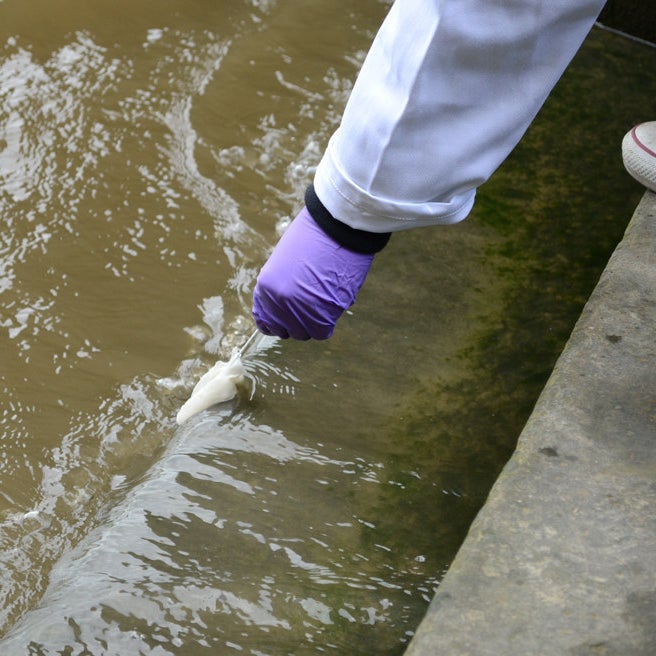
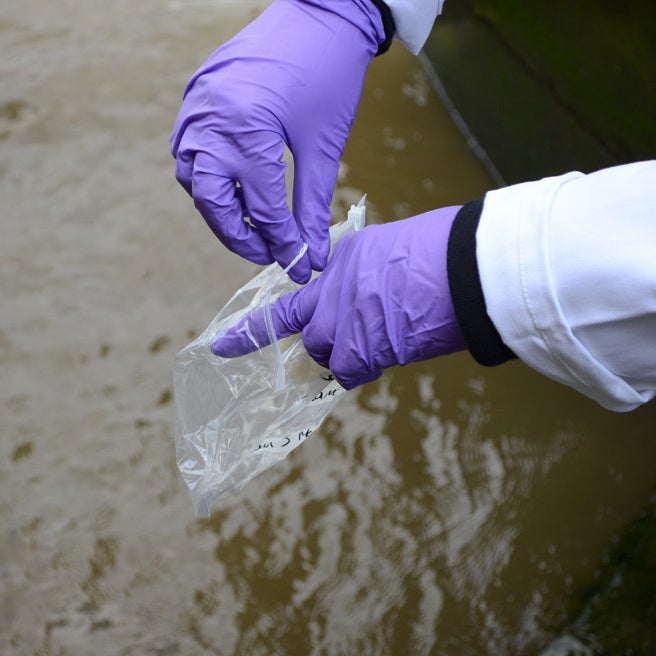
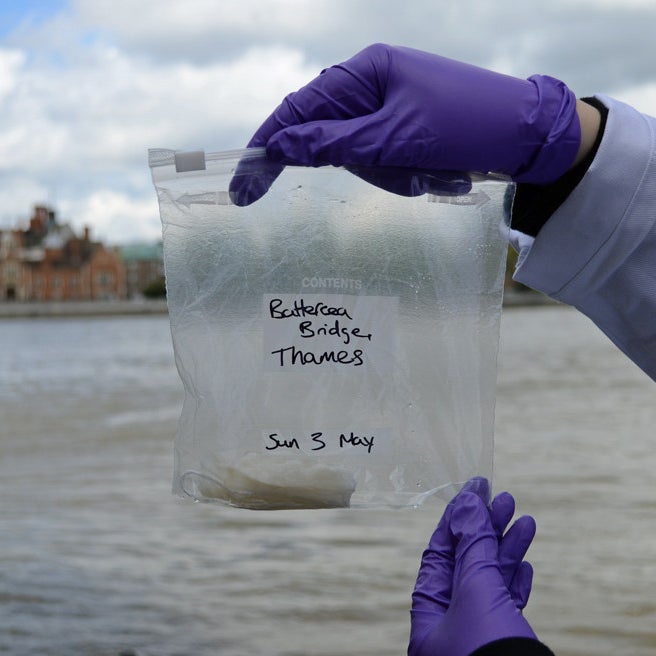
1. Find your river.
2. Label a ziplock bag with the date and place.
2. Dip a new, dry tampon into the water and hold for a few seconds (you can tie it to a bamboo stick or fishing rod if you can't get close enough to the river to do this by hand).
3. Retrieve and place into labeled bag.
4. Repeat with new tampons and bags in other rivers.
Once you've collected all your samples...
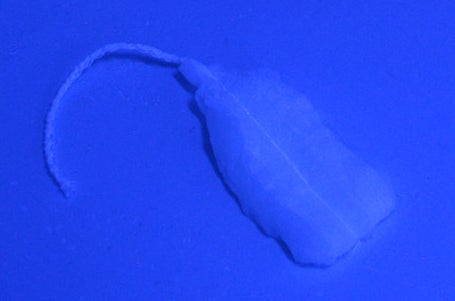

5. Find a dark room.
6. Shine your UV light on the first tampon.
7. Record whether it fluoresces or not.
8. Repeat until you've tested all tampons.
In the above photos, the tampon on the right is fluorescing (after we treated it with water containing laundry detergent) and the one on the left is not.
🌊🌊🌊🌊🌊🌊🌊🌊
Here's what we found in each location:
London, UK


Thames River
Kelly: We tested a bit of the Thames right by Battersea Bridge at about 2 p.m. on a Sunday afternoon.
The tampon did not fluoresce under UV light when we got it back to our makeshift lab. Maybe the Thames is just so polluted with everything else that there just were't enough optical brighteners in our sample to show up?
Omaha, Nebraska, U.S.
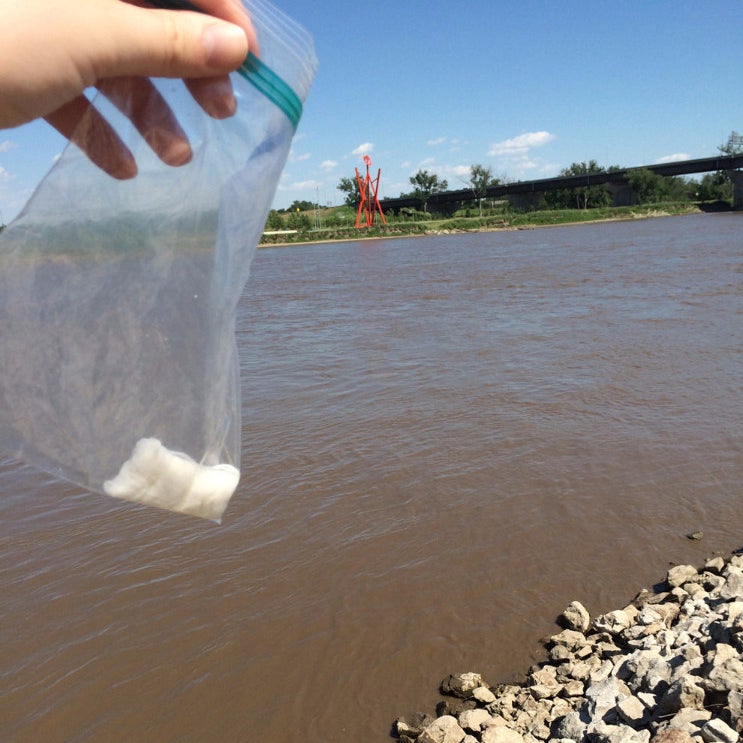

Missouri River
Kasia: The sea was tepid dirty bathwater that day, my friends. The word "riverfront" is a bit misleading, seeing as there are very few easy ways to access said water. I managed to dip the ole cotton bullet while laying on a dock on my stomach and trying not to fall in. The Midwest can rest easy: no optical brighteners here (on the day I tested it, anyway).
New York City, New York, U.S.

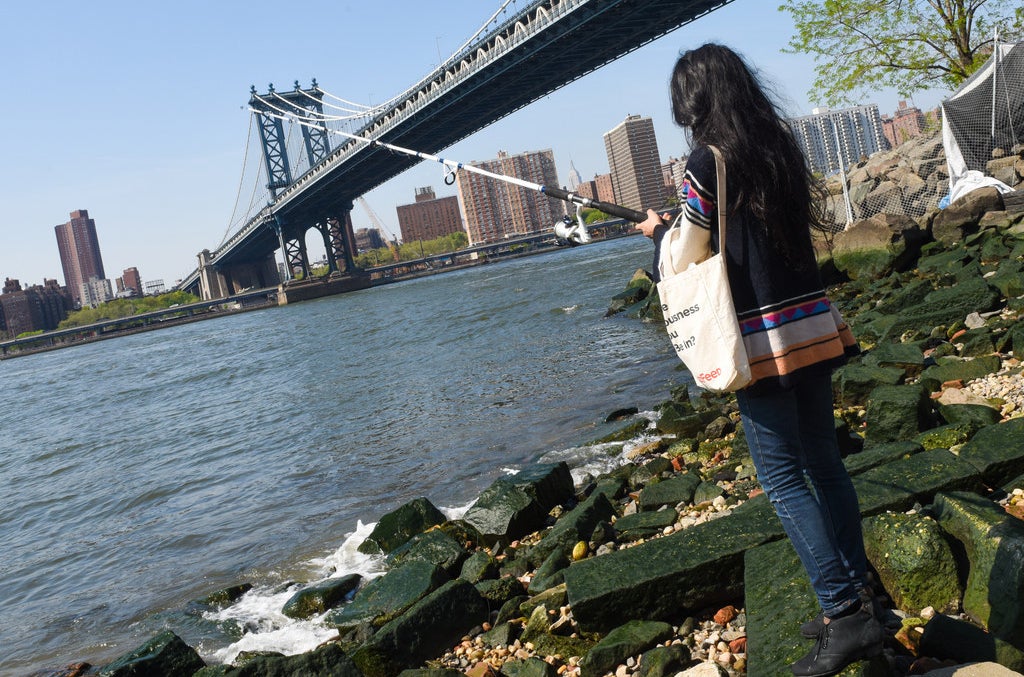
The Hudson
Natasha: I went to the Hudson River Park in Manhattan, and encountered a slight problem — the entire Hudson walkway is elevated several feet above the river, which makes it nearly impossible to get close enough to dip tampons into the water. So I had to use a fishing rod.
The tampon didn't glow in the dark. I was kind of worried that I hadn't done the test correctly. Maybe we just happened to test this in a spot where there wasn't any grey water runoff? Or maybe the Hudson is cleaner than I thought? Who knows.
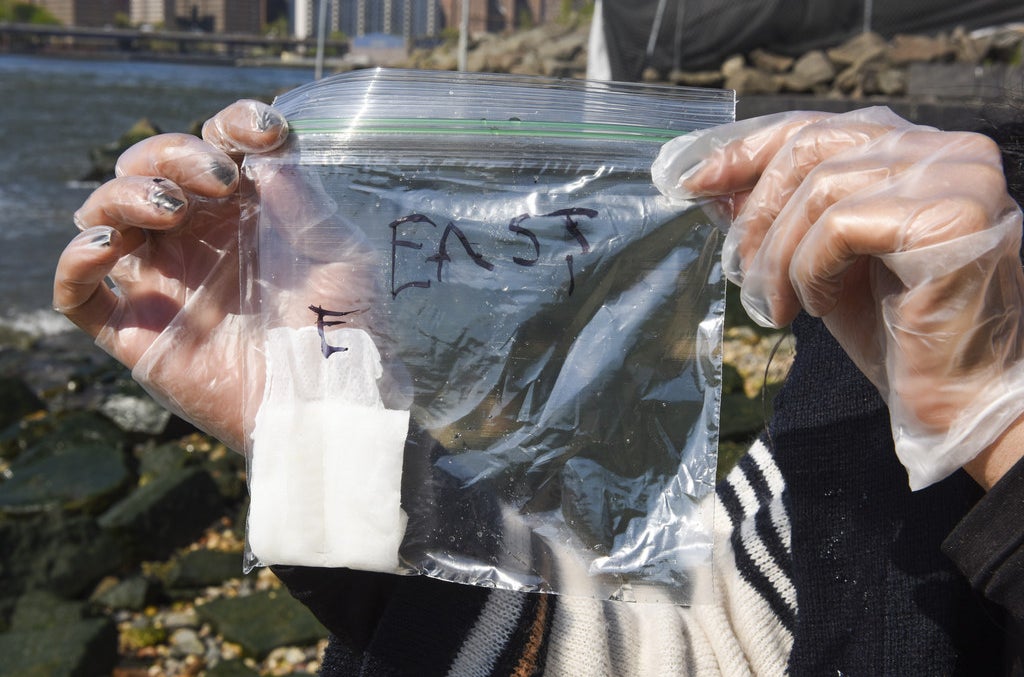
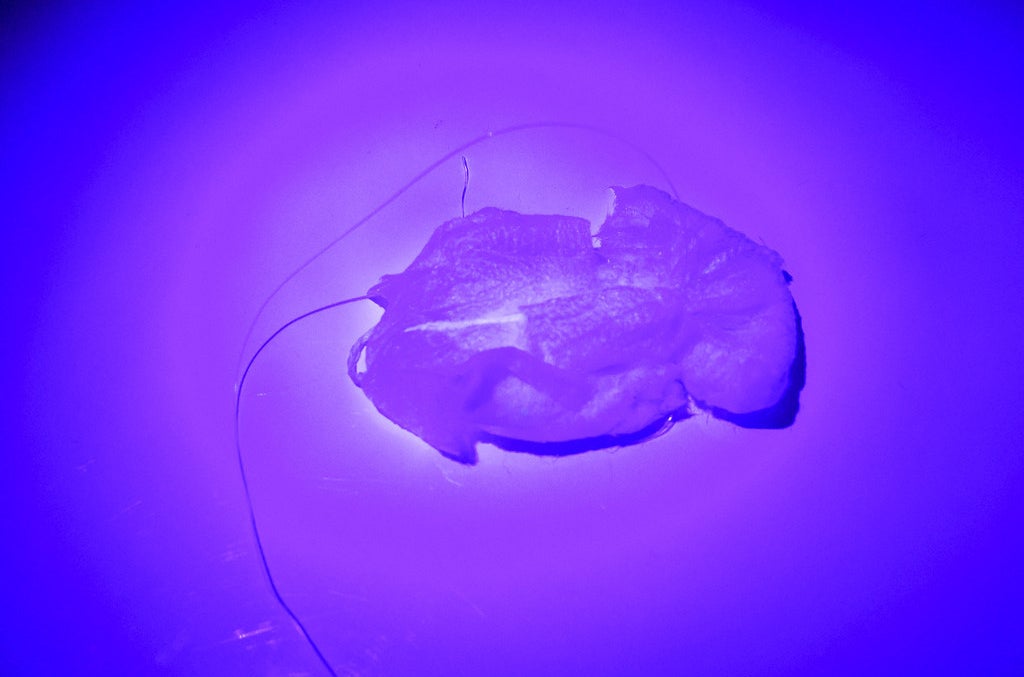
The East River
Natasha: We went to the East River in Brooklyn. I wish I'd used a fishing rod this time, because a giant wave splashed on me when I got close to the water.
And guess what? The tampon was covered in tiny specks that glowed in the dark, which means that at the time we tested it, the East River was polluted with grey water.
🌊🌊🌊🌊🌊🌊🌊🌊
Disclaimer: We didn't do any repeats and only dipped each tampon into the water for a few seconds.
These results don't tell us anything more than whether that particular part of each river had any optical brighteners in it during those few seconds. As any good science student knows, you need to your repeat your experiment several times before you can draw any conclusions.
We emailed Lerner to tell him our results and he said this: "It surprising to me that you only had one hit. Other than the possibility that all the rivers are clean, my hypotheses to test are (a) the optical brighteners are degraded by the bacteria and sunlight in the river, and (b) there wasn't much absorbed because of the short exposure and the high dilution in such large rivers. We need to do some more research!"
So in conclusion: More research is required, but at least we got to wave tampons around in public. 💃